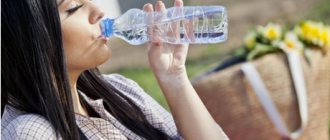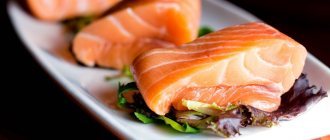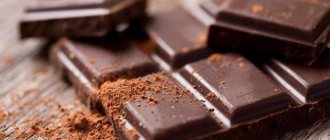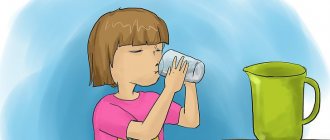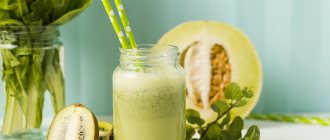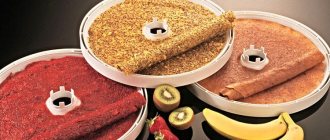It is no secret that fish and seafood for gastritis are included in the patient’s diet without fail. This is due to their composition: a lot of protein, amino acids, vitamins. This set of substances helps restore the gastric mucosa. However, not every fish is suitable for those who are concerned about gastrointestinal problems. When purchasing, it is important to pay attention to the variety, as well as prepare it correctly. In this article we will try to answer the reader’s question whether it is possible to eat pollock for gastritis with varying acidity.
Pollock for gastritis
Among cod fish species, pollock is considered very popular. It is mined in very large quantities. Dishes are included in the daily diet. It is found quite often on the menu of medical institutions. Since cod fish is considered a dietary product, pollock is recommended for consumption in cases of gastritis.
Nutritionists recommend including it in the menu regularly; even if you are not bothered by gastritis, fish dishes will bring invaluable benefits to the body. This is especially true for overweight people. It is best to eat fish steamed or boiled - this way it will bring more benefits.
Among cod fish species, pollock is considered very popular
Pollock meatballs for gastritis recipe
Make minced fillet, add some gray, slightly stale bread. If the patient does not suffer from an exacerbation, you can add chopped onions. The ingredients are mixed and balls are formed from them. Getting ready for steam.
Fish casserole for gastritis recipe
Another affordable and absolutely uncomplicated recipe. To prepare a delicious, appetizing casserole, you need to take pollock and mince the fillet 2-3 times. Then prepare mashed potatoes, and soak a couple of pieces of white bread in water. Bread, mashed potatoes, a few tablespoons of milk, and 1-2 eggs are added to the minced meat. The resulting mass is placed on a baking sheet and baked in the oven.
What else is pollock useful for?
Pollock brings invaluable benefits to the body in other diseases. Thanks to its unique composition, it can reduce the risk of heart attack, stroke, and other cardiovascular diseases. Cod fish also reduces the level of “bad” cholesterol and improves metabolic processes.
It is thanks to it that you can increase the efficiency of your brain. The iodine contained in the product is essential for the normal functioning of the thyroid gland. Vitamin A improves hair condition, iron prevents anemia. Well, phosphorus and calcium take care of the condition of your teeth and the strength of your bones.
Is pollock possible for gastritis?
One of the most caught and widespread cod fish is pollock. Dishes based on this fish are included not only in the daily menu, they are also on the menu of various medical institutions. This is due to the large number of beneficial properties of fish.
Pollock is a dietary product. Nutritionists and many doctors recommend regularly including this fish in your menu. Pollock will be useful not only for people suffering from gastritis; it can be eaten by those who want to lose excess weight.
Pollock contains various beneficial substances, vitamins and elements. Fish contains vitamins B, PP, E, A, iodine and Omega-3. For a more effective effect of fish on the body, you need to include it in your menu at least twice a week.
At the same time, pollock will be useful not only for gastritis. Its composition will help reduce the risk of cardiovascular diseases, reduce cholesterol levels, and improve metabolic processes.
Pollock soup for gastritis recipe
This dish can be eaten even with the strictest diet. After selecting the bones from the fish, cut it into small pieces. Lightly salt the water, heat to a boil and make fish broth. When the fish is ready, you can add a raw egg to it. Or do it differently: do not add the egg, but grind the finished soup to make a puree.
Why is fish so healthy?
As mentioned above, “proper” fish has a lot of protein, but practically no fat. And if there is, then omega-3, omega-6. They accelerate the healing of the mucous membrane, help remove toxins and reduce cholesterol. Fish contains a lot of calcium, iodine, and other important elements.
It is fish, and not meat or other protein-containing products, that should be a priority for one more reason. It takes 1.5-2 hours to digest it, while pork and beef remain in the digestive system for 5-6 hours. Moreover, fish dishes are absorbed almost completely. The same cannot be said about meat products.
Pollock for gastritis with high acidity
Pollock has no equal among fish for
selenium, iodine and proteins. Pollock has no equal among fish for selenium, iodine and proteins. It is important to note that the protein of this fish is very easily digestible, which is why it is prescribed even to seriously ill people, let alone the inflamed gastric mucosa of a patient with gastritis.
And all of the listed vitamins, fatty acids and trace elements of pollock ensure the full function of the stomach and intestines. In addition, a set of fish meat components promotes the regeneration of stomach cells, that is, restoration of the integrity of the mucous membrane, improves its protective function. The latter is especially important for gastritis with high acidity.
Pollock soup for gastritis with high acidity recipe
You will need two heads of onions, two medium-sized carrots, about a kilogram of potatoes, a kilogram of pollock, some finely chopped greens, salt, parsley (root), two bay leaves.
Thaw the fish, clean it, cut off the head and gut it. Pour four liters of water into a saucepan and place the head there. Cook for about 20 minutes, after which we remove the head. Cut the body of the fish into small pieces; do the same with the onion, peeling it.
Peeled potatoes are washed, cut into cubes, and carrots should be grated on a coarse grater. Boil the prepared broth, add the cooked potatoes and add a little salt. Cook for about fifteen minutes until the potatoes are soft.
It's time to place the chopped fish, carrots and onions into the pan. Cook for five minutes and remove the pan. After this, add parsley and bay leaf. Leave the ear for 15 - 20 minutes. Greens are added to the plates if desired.
What is smoking
Smoking is the processing of products with smoke, which is formed during the slow combustion of firewood and sawdust. Smoked meat, fish, vegetables and even fruits have a unique aroma, have a special delicate taste, and they look very attractive, which certainly stimulates the appetite. In addition, appropriate processing helps kill bacteria and ensures that the fat does not go bitter and does not oxidize for a long time.
Smoking is the processing of products with smoke that is formed during the slow combustion of firewood and sawdust.
There are two smoking methods - cold and hot smoking. During hot smoking Products are smoked at high smoke temperatures (meat -35-50 °C, fish - 90-100 °C) for several hours. They lose little moisture and turn out quite juicy, soft and especially aromatic. The disadvantage of this method is that hot smoked products cannot be stored for a long time.
With cold smoking, products are heated with cold smoke weakly (meat - up to 18–20 °C, fish - up to 40 °C), but for a long time (meat - from two to seven days, fish - up to five days). Moisture is gradually removed from them, and smoking substances penetrate deeper. They can be stored for quite a long time; the taste of such smoked products is excellent, except that these products are quite dry. All smoked products are raw smoked, boiled-smoked (first smoked and then boiled) or smoked-baked (first smoked and then baked).
Pollock in the oven for gastritis
Pollock in the oven is a quick and easy way to prepare a delicious dinner for a disease such as gastritis. People, when gastritis is confirmed, often do not know what dishes can be prepared from fish.
Fried fish is difficult to digest even for a healthy stomach, so you should pay attention to other recipes. A properly prepared dish will be tasty and healthy. You can prepare various dishes from fish, but you should remember that frying in oil is strictly prohibited.
Pollock baked in the oven for gastritis recipe
This recipe requires fish fillets, low-fat milk, flour, salt and a little butter to grease the pan. Poach the fillet in boiling water for about 10 minutes. To make the sauce, pour flour into a heated frying pan and pour milk. Place the fish in a dish, add salt and pour over the resulting sauce. Bake at 200 degrees for a quarter of an hour.
What kind of fish can you eat?
Patients are allowed to eat boiled or steamed fish. Acceptable fat content is four percent. You can eat river and sea fish. The list is presented:
- sea flounder;
- pollock;
- hake;
- pollock;
- zander;
- haddock;
- navaga;
- Lemonema.
These varieties are low-fat, so they will not irritate the mucous membranes. Patients can treat themselves to fish broth, steamed cutlets and meatballs, and fish soup.
How to cook pollock for gastritis
Try to buy Russian pollock fillets, not Chinese ones. There are no small fish carcasses in it - they are all at least 20 cm long; a quality product is always white, not yellowish or pink, without spots, with a slight sweetish aroma.
Pollock is often sold in packaging: such a product should contain nothing except the fish itself and water. A product with polyphosphate - E452, which is used to retain moisture, is less useful, but this additive is allowed in our country; so you can buy it, but at least not too often and in the absence of unpackaged fish “in bulk”.
We recommend reading: Feeling of early satiety
Stewed pollock with onions and carrots for gastritis recipe
Let's prepare the food: cut the fish into fillets, peel the onions and carrots. Cut the onions (2-3 pieces) into half rings and put them in a separate bowl. Grate three carrots coarsely. If you want, you can cut the carrots into strips. Cut the fillet into small rectangles.
We begin to lay out the layers: pour 2-3 tbsp onto the bottom of the saucepan. l. vegetable oil (olive or sunflower) and lay out onion rings. Place grated carrots in the next layer. Then – chopped fish fillet.
Repeat layers: onions, carrots, fish, onions, carrots. If everything doesn't fit in the pan, press the layers lightly with your hand. At the very top there should be an onion-carrot layer. Add 100 ml of water. You don't need more water, as the fish will release juice when stewing. Throw 1 tbsp into the saucepan. l salt, 3 allspice peas, 3 cloves, 3-4 laurel leaves.
Place sour cream (4 spoons) and distribute it over the surface of our dish. Close the lid, put it on the stove and wait for it to boil. Then reduce the heat and simmer for 30-40 minutes. Delicious pollock fillet stewed with carrots and onions is ready! Serve alone or with mashed potatoes.
Gastritis and salmon
Despite the many benefits of salmon, it can be very harmful to patients with gastritis. Salmon has a high fat content, so it is difficult for an inflamed gastrointestinal tract to digest it. It is harmful for any acidity disorders.
During remission, salmon can be eaten only in small quantities and only with a doctor’s permission. If you feel worse after taking it, it is better to switch to less fatty fish.
Patients can only eat fish fillets cooked in a steamer. Dishes prepared by other methods are strictly prohibited.
Salmon can be served with boiled or stewed vegetables, cereals and durum wheat pasta.
Steamed salmon is allowed for gastritis
Is it possible to give tilapia to children?
Since tilapia has a tender, almost boneless fillet that softens well when cooked, it is quite suitable for baby food. As a rule, they begin to accustom a child to such food at 7-8 months, provided that the child is bottle-fed. Breastfed children do not need early complementary feeding.
Important! Before introducing fish into your child's diet, it is recommended to consult a doctor.
An ideal option for complementary feeding would be fish puree. When feeding fish for the first time, you should limit yourself to 1 tsp. for meals. The next portion should be given no earlier than 24 hours later. During this time, it will become clear whether the child has allergic reactions to tilapia. If after a period of time no such reactions are detected, you can gradually increase the dosage to 50 g per dose.
Tilapia is good for children of any age, as it contains phosphorus, which helps absorb calcium and plays an important role in the formation of bone tissue.
The benefits of tilapia for weight loss
Due to its low calorie content, tilapia has gained popularity among weight watchers. The fillet of this fish contains little fat and is therefore considered a dietary product. At the same time, it is very nutritious due to the large amount of proteins, so it effectively helps fight hunger.
In non-carbohydrate nutrition systems when losing weight, it is often advised to replace meat with fish. However, not all varieties are equally useful. In terms of calorie content, fatty mackerel is far ahead of lean pork. In order not to be mistaken, we will divide the fish according to fat content.
| Fat content per 100 grams of fish and seafood | |
| High fat content (10 g or more) | Atlantic herring, eel, sturgeon, stellate sturgeon, mackerel, sardines |
| Medium fat (from 5 to 10 grams) | Salmon (Atlantic, coho, sockeye, chinook), bluefish, catfish, rainbow trout, swordfish, catfish, capelin, carp, chum salmon, salmon, pink salmon |
| Low Fat (2 to 5 grams) | tilapia, halibut, mussels, sea bass, oysters, Pacific sea bass, chum salmon, tuna, hake |
| Very low fat content (less than 2 grams) | Pollock, pike, pike perch, crucian carp, cod, navaga, flounder, haddock, lobster, scallops, shrimp |
To get an idea of the fat content of seafood, pay attention to the color of the meat. If it is light, you have a lean variety of fish. The darker the fillet, the more calories. Think herring, salmon or mackerel.
Of course, scientists say that fatty fish is the healthiest. It contains a large amount of necessary substances. But when losing weight, you should forget about it. Or reduce your consumption to a small piece per week.
Let's mention low-fat fish varieties separately. They have no carbohydrates. That's why they are so popular among fans of low-carb diets. So switching to fish while dieting can help delay the need to lower your carbohydrate intake.
| Product (per 100 grams) | Squirrels | Fats | Carbohydrates | Calorie content |
| Low Fat (2 to 5 grams) | ||||
| Tuna | 24,4 | 4,6 | 0 | 139 |
| Sea bass | 18,2 | 3,3 | 0 | 103 |
| Far Eastern flounder | 15,7 | 3 | 0 | 90 |
| Vobla | 18 | 2,8 | 0 | 95 |
| Bream | 17,1 | 4,4 | 0 | 105 |
| Carp | 18,2 | 2,7 | 0 | 97 |
| White-winged halibut | 18,9 | 3 | 0 | 103 |
| Hake | 16,6 | 2,2 | 0 | 86 |
| Oceanic horse mackerel | 18,5 | 4,5 | 0 | 114 |
| Very low fat content (less than 2 grams) | ||||
| Pollock | 15,9 | 0,9 | 0 | 72 |
| Blue whiting | 18,5 | 0,9 | 0 | 82 |
| Haddock | 17,2 | 0,5 | 0 | 73 |
| Cod | 16 | 0,6 | 0 | 69 |
| River perch | 18,5 | 0,9 | 0 | 82 |
| Pike | 18,4 | 1,1 | 0 | 84 |
| Zander | 18,4 | 1,1 | 0 | 84 |
| crucian carp | 17,7 | 1,8 | 0 | 87 |
Lean fish has less fat than the leanest meat. You can get the same amount of protein from everyone, but consume fewer calories. This will allow you to keep your carbohydrate intake to a relatively moderate level and you won't feel too depleted. Even in the evening you are allowed to eat fish while losing weight. The excess will definitely not be put aside
